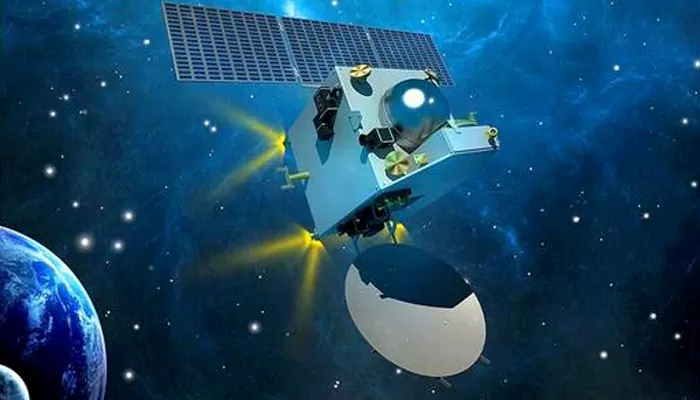Microsoft & OpenAI Collaborating For 'Stargate' Supercomputer Worth $100 Billion; Here's A Look At World's Top 5 Supercomputers
- Admin
- 1 year ago
- 4 minutes read

The artificial intelligence supercomputer named 'Stargate' is slated for launch in 2028.
The world of 'artificial intelligence' is growing at an exponential rate, and there's absolutely no sign of slowing down. Now, according to the latest reports, tech giants Microsoft and OpenAI are collaborating on a highly ambitious data center project (worth $100 billion) which would include an artificial intelligence (AI) supercomputer called 'Stargate'. Without an iota of doubt, this is going to redefine the landscape of AI, taking us to a whole new era of technology.

Artificial Intelligence
This 'milestone' move comes as a response to the ever-increasing demand for AI data centers, driven by the rapid adoption of generative artificial intelligence technology. Experts believe that Stargate will be capable of handling various complex tasks, redefining the boundaries of AI. It's slated for launch in 2028.

Microsoft CEO Satya Nadella
This supercomputer will be the largest in a series of planned installations over the next six years. As we wait for it, let's have a look at some of the best existing supercomputers in the world.
Frontier (OLCF-5)
The world's first exascale supercomputer, Hewlett Packard Enterprise Frontier or OLCF-5 has been operational since 2022 and is hosted at the Oak Ridge Leadership Computing Facility (OLCF) in Tennessee, United States. It uses 9,472 AMD Epyc 7453s "Trento" 64 core 2 GHz CPUs (606,208 cores) and 37,888 Instinct MI250X GPUs (8,335,360 cores). It occupies 74 19-inch (48 cm) rack cabinets, each of which hosts 64 blades. Also, it uses an internal 75 TB/s read / 35 TB/s write / 15 billion IOPS flash storage system, along with the 700 PB Orion site-wide Lustre filesystem.
(Credit: tweaktown)
It was built at a cost of US$600 million.
Aurora
Aurora is currently the second fastest supercomputer and is expected to be even better in coming years as further development is going on. Built on an estimated budget of US$500 million, Aurora occupies over nine thousand nodes, with each node being composed of two Intel Xeon Max processors, six Intel Max series GPUs, and a unified memory architecture. It consumes around 60 MW of power.
(Credit: interestingengineering)
It works in various areas, including research on nuclear fusion, low-carbon technologies, subatomic particles, and cancer and cosmology.
Fugaku
Fugaku is a petascale supercomputer (capable of calculating at least 1015 floating point operations per second) located at the Riken Center for Computational Science in Kobe, Japan. Named after Mount Fuji, Fugaku has been operational since 2020, becoming the world's fastest supercomputer in the June 2020 TOP500 list.
(Credit: fujitsu.global)
This supercomputer is built with the Fujitsu A64FX microprocessor and uses a "lightweight multi-kernel operating system" named IHK/McKernel. Also, it uses a three-tiered storage system that provides parallel storage to the compute nodes. During the COVID-19 pandemic, Fugaku was extensively used for research on masks and vaccines.
(Credit: cnn)
LUMI (Large Unified Modern Infrastructure)
LUMI is another petascale supercomputer thatis capable of executing more than 375 floating point operations per second. It is located at the CSC data center in Kajaani, Finland.
(Credit: synopsisarchitects)
Built on a budget of €144.5 million, LUMI is a GPU (Graphics Processing Unit) based system that is equipped with 1.75 petabytes of RAM. There's a 7-petabyte partition of flash storage, along with 80-petabytes of traditional storage, both of which are based on the Lustre parallel file system and a 30-petabyte data management service based on Ceph. It uses 100% hydroelectric energy, making it one of the world's most environmentally efficient supercomputers.
Leonardo
Located at the CINECA datacenter in Bologna, Italy, Leonardo is also a petascale supercomputer that is capable of 250 petaflops (250 quadrillion operations per second). The system has an Atos BullSequana XH2000 computer, alongside around 14,000 Nvidia Ampere GPUs and 200Gbit/s Nvidia Mellanox HDR InfiniBand connectivity.
(Credit: casaitaliarai)
There are three separate modules. The first is known as the "booster module" which consists of 13,824 Nvidia A100 GPUs. The second module is known as the "data-centric module" which is made up of 1,536 Intel Sapphire Rapids CPUs. The third module - "front-end & service module" - complements the first two modules, and is backed by two storage systems.
Besides these supercomputers, the list also includes Eagle, MareNostrum 5 ACC, Eos NVIDIA DGX SuperPOD, and Sierra.



.webp)

.webp)






